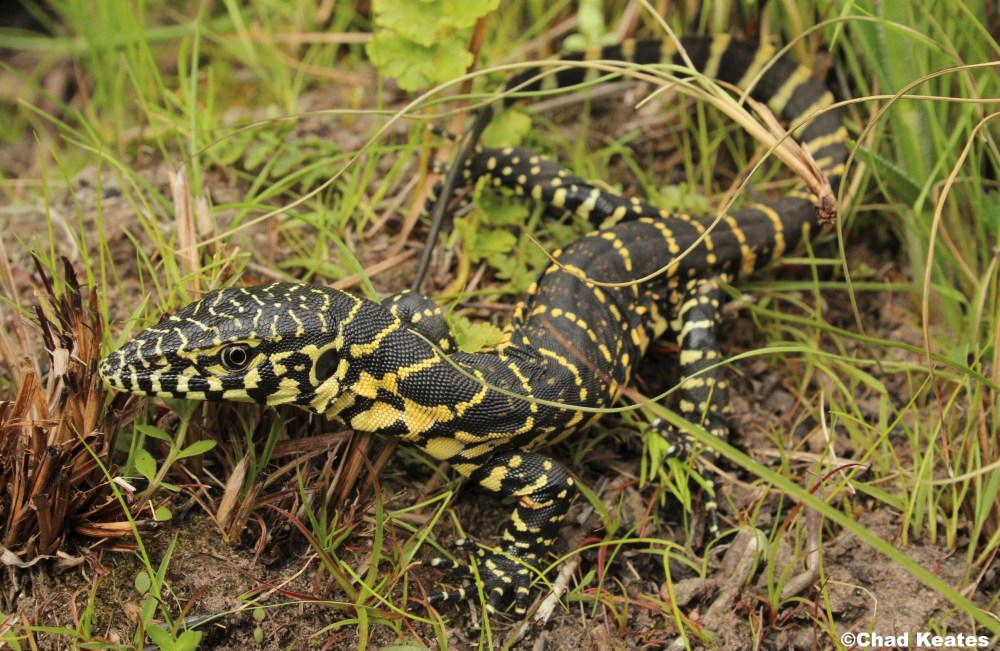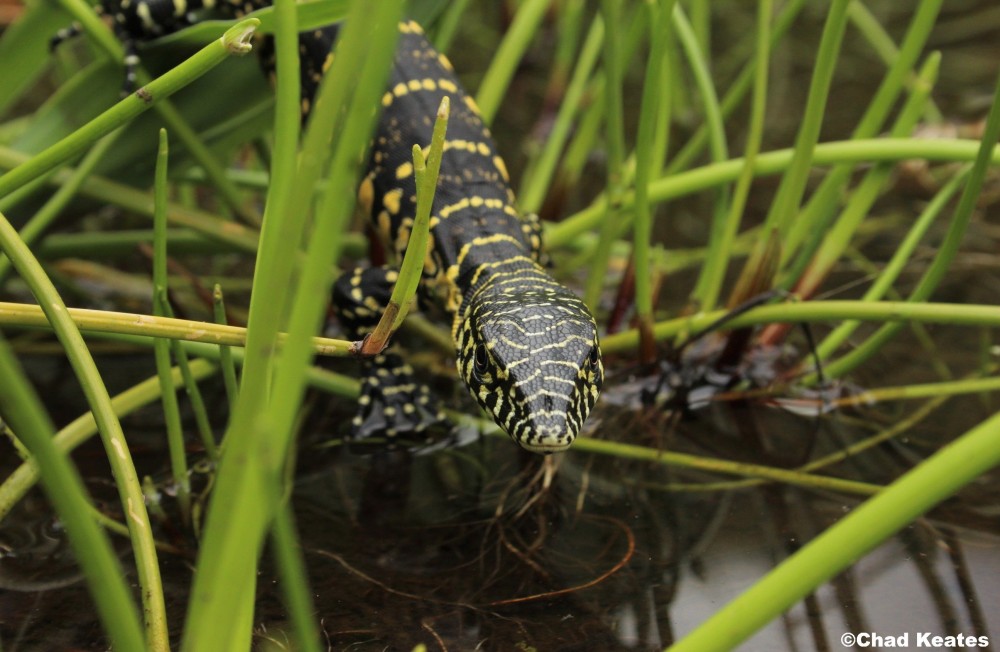The Monitor Lizards of Southern Africa
Southern Africa plays host to two species of monitor lizards, the Water/Nile Monitor and the Rock Monitor. These animals are often confused with crocodiles because of their large size, and similar ecology (Nile/Water Monitors live near water). Despite their apparent similarities, they could not be more different.
Both monitor lizards fall into the family Varanidae which means they are closely related to the world-renowned Komodo Dragon.
Firstly they are distantly related genetically and evolutionarily, which is illustrated by the fact that monitor lizards are lizards and are thus more closely related to snakes than crocodiles. Secondly, monitor lizards pose absolutely no threat to human beings. They don’t hunt or predate upon humans, and prefer much smaller prey. They will only bite, scratch, or strike you with their tails if they feel cornered or directly threatened. If you leave them alone they will stay well clear.
These animals go by many names, and are often interchangeably referred to as either monitor lizards or leguaans. While the leguaan is often ascribed to the Water/Nile Monitor there are instances where the Rock Monitor is referred to as the Rock Leguaan.
Nile/Water Monitor – Varanus niloticus

Family: Varanidae.
Length: 120-220cm.
Description: The lizard is black and yellow with an elongated head and a flat tail to aid in swimming. Juveniles are usually more vividly coloured than adults.
Distribution: The species is present in the eastern part of Southern Africa but it is also present along the Orange river all the way to the Atlantic ocean. The species reaches is southern-most limit at Seekoei river, Eastern Cape and is thus not present in the Western Cape.
Habitat: Closely associated with water sources such as dams, pans and rivers where it can be found from 0-1600m above sea level.
Reproduction: Oviparous, a female can lay up to 60 eggs. females lay their eggs in live termite mounds and juveniles emerge from the termite mound 4-6 months later.
Diet: Freshwater Crabs and mussels, frogs, fish, birds and their eggs. Nile monitors are also known to eat the eggs of terrapins, sea turtles and crocodiles. Juveniles tend to stick to reed beds in shallow water where they hunt frogs and insects
Predators: Crocodiles and southern African pythons are among the main predators of the nile monitor.
Conservation concern: Common and widespread. They are not of conservation concern.
Threat to humans: Non-venomous, but an adult may bite or thrash their powerful tail if they feel threatened.
Interesting facts: Africa’s largest lizard.



Rock Monitor – Varanus albigularis

Family: Varanidae.
Length: 100-150cm.
Description: The rock monitor is smaller than the nile monitor. It has strong, stocky limbs and an large swollen snout. The tail is longer than the body and the body is dark brown/grey with dark blotches spread across the back. the juveniles are more vividly coloured than adults with a less pronounced snout.
Distribution: It is found throughout the savannah and semi-arid regions of the southern and eastern parts of Southern Africa. It is absent from western Western Cape and the southern Northern Cape.
Habitat: Closely associated with rocky outcrops where it tunnels underneath rock overhangs to create burrows. Also known to use abandoned animal burrows and climb trees.
Reproduction: Lays 8-50 eggs in soft soil.
Diet: Mainly invertebrates but will hunt and eat animals small enough to swallow. Also eats carrion and baby tortoises.
Predators: The martial eagle is the main predator of adults.
Conservation concern: Common and widespread. They are not of conservation concern.
Threat to humans: Non-venomous, but an adult may bite or thrash their powerful tail if they feel threatened.
Interesting facts: If threatened, the rock monitor may eject its cloacal contents or sham death.

Resources:
Bates, M.F., Branch, W.R., Bauer, A.M., Burger, M., Marais, J., Alexander, G.J. & de Villiers, M.S. (eds). 2014. (CD set). Atlas and Red List of the Reptiles of South Africa, Lesotho and Swaziland. Suricata 1. South African National Biodiversity Institute, Pretoria.
Branch, B. 1994. Snakes and other Reptiles of Southern Africa. Cape Town. STRUIK.
Branch, B. 2016. Snakes and other Reptiles of Southern Africa. Cape Town. STRUIK Nature.
 Chad Keates
Chad Keates 






At half a metre long, it probably was a monitor, check out the photos of the rock monitor and the water monitor on my site and see if they perhaps look the same.
LikeLike
I live in Howick KZN,
A Leguan (approx 500mm long) came into my home. No worries, he hid in my bedroom. I left him there, did not want to distress him. Opened front and back doors. After an hour I checked again. Nowhere to be seen.
On the carpet by the open front door, I noticed a smallish wet patch + a smallish, white bit of faeces.
I assume it belongs to the Leguan, since he is nowhere to be found.
Am I correct in my assumption.
Regards
LikeLike
Pingback: MONITOR LIZARDS – Something Over Tea